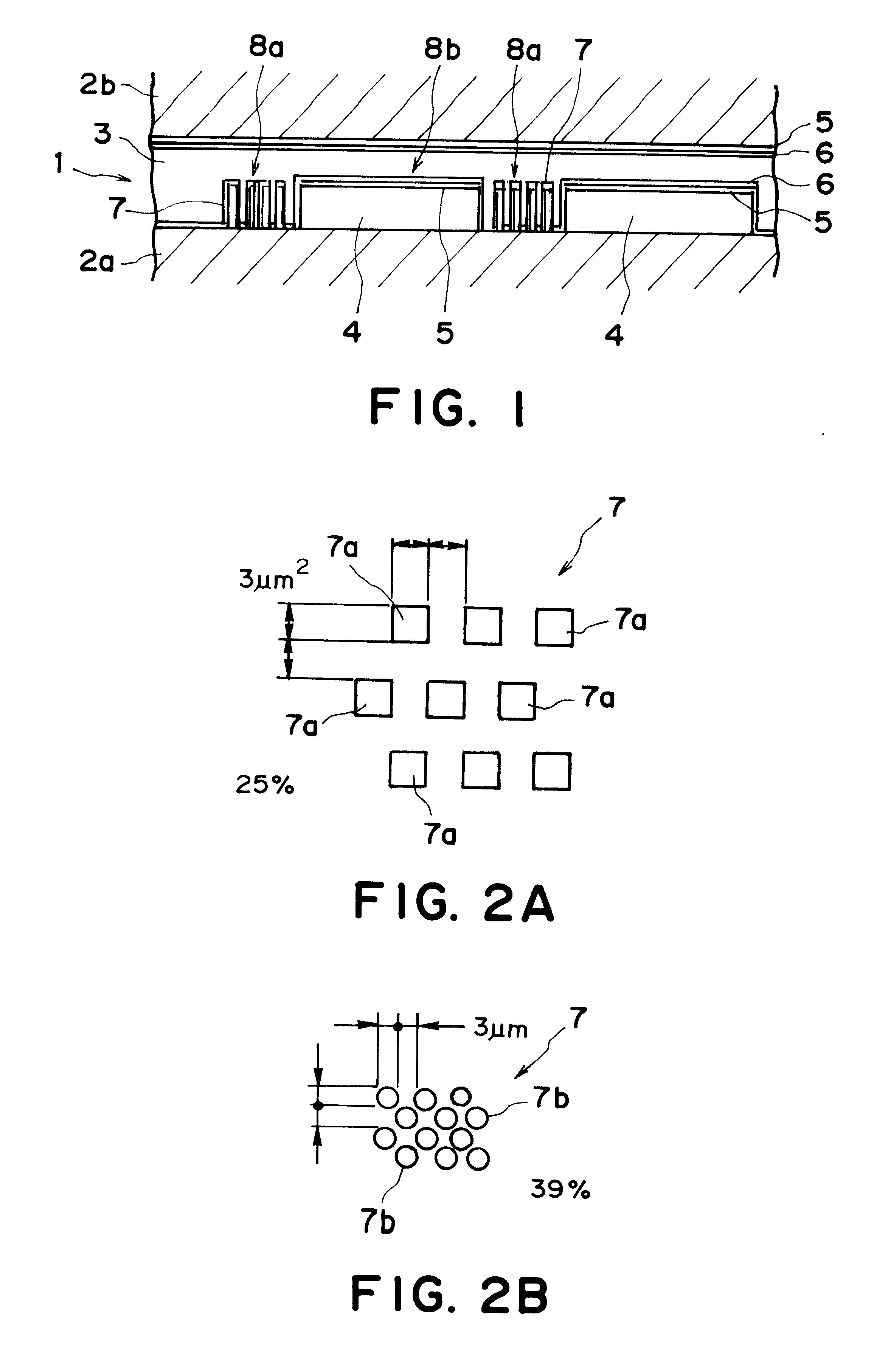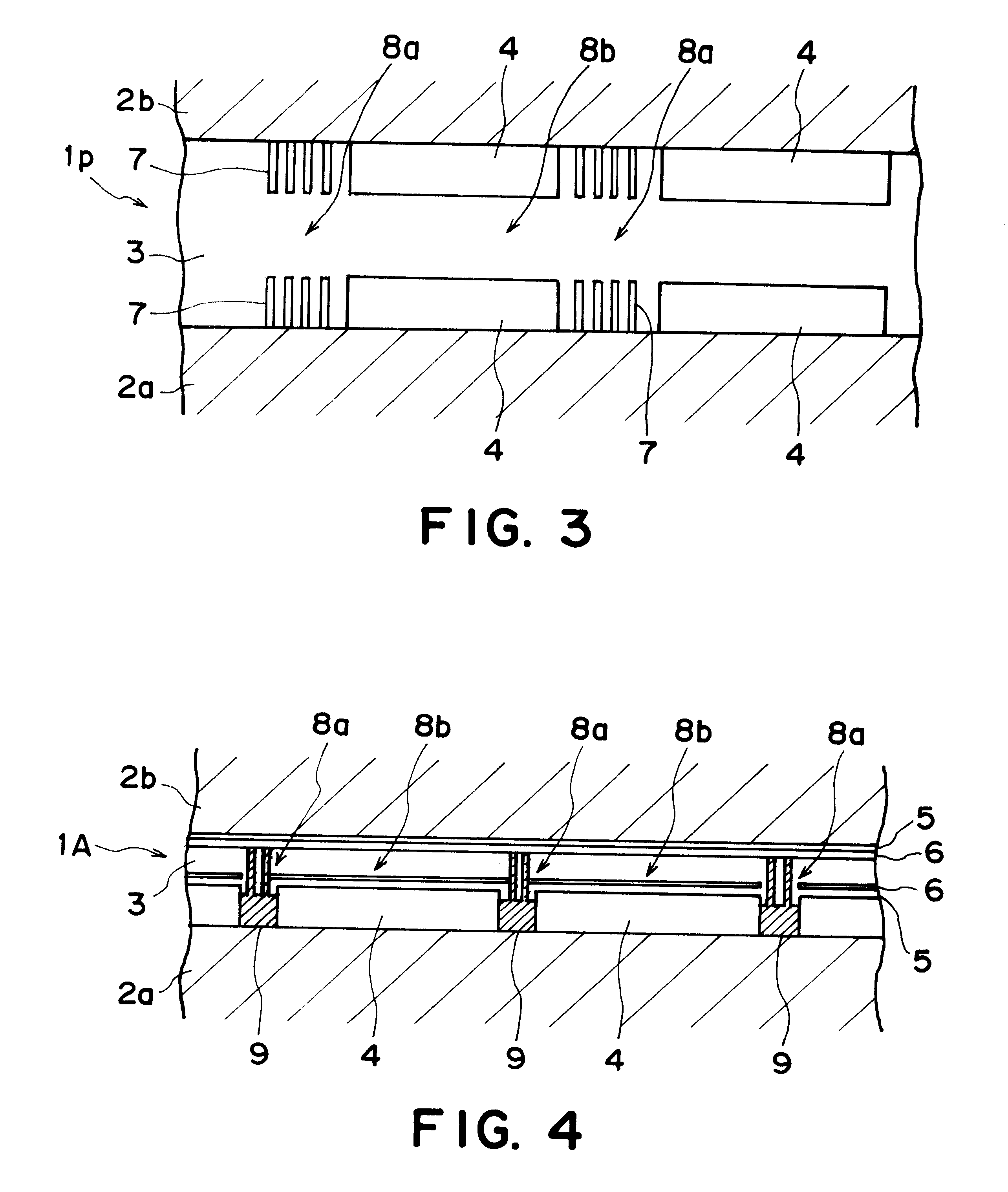Liquid crystal device and process for production thereof
a technology of liquid crystal and liquid crystal, which is applied in the direction of static indicating devices, instruments, non-linear optics, etc., can solve the problems of low-quality picture giving a rough appearance as a whole, increasing production costs, and difficulty
- Summary
- Abstract
- Description
- Claims
- Application Information
AI Technical Summary
Problems solved by technology
Method used
Image
Examples
example 2
A chiral nematic liquid crystal device was prepared in the following manner.
Two substrates 2a and 2b were treated in the same manner as in Example 1 up to the formation of the color filters 4, the vertical structure 7 at the outside-pixel region 8a and the transparent electrodes 5. Then, each substrate was coated with a polyimide alignment film 6 ("SE-3140", available from Nissan Kagaku K.K.), followed by rubbing.
The thus-treated two substrates 2a and 2b were then applied to each other with spacer beads dispersed therein so as to provide a gap of 2 .mu.m therebetween and so that their rubbing directions were parallel and opposite to each other.
Separately, a chiral nematic liquid crystal 3 having a helical H pitch of 3.4 .mu.m was prepared by adding an optical dopant to a nematic liquid crystal composition ("KN-400", available from Chisso K.K.) and injected into the gap between the substrates 2a and 2b to form a liquid crystal device.
As a result of multiplexing drive, the liquid crys...
second embodiment
Next, a liquid crystal device according to the present invention will be described.
first embodiment
Referring to FIG. 3, a liquid crystal device 1p according to this embodiment includes color filters 4 and vertical structures 7 on both substrates 2a and 2b. Each color filter may have a thickness of, e.g., 0.75 .mu.m (about a half that of the color filter 4 in the first embodiment), and color filters 4 at opposing positions on both substrates may have an identical color.
The liquid crystal device 1p may be prepared by forming the color filter 4 and vertical structure 7 on each of the substrates 2a and 2b and thereafter performing formation of electrodes and alignment film, rubbing and application of the substrates similarly as in the first embodiment. Incidentally, it is possible to omit the color filters 4 from one substrate, e.g., 2b, while forming only the vertical structure 7 on the substrate 2b.
PUM
 Login to View More
Login to View More Abstract
Description
Claims
Application Information
 Login to View More
Login to View More - R&D
- Intellectual Property
- Life Sciences
- Materials
- Tech Scout
- Unparalleled Data Quality
- Higher Quality Content
- 60% Fewer Hallucinations
Browse by: Latest US Patents, China's latest patents, Technical Efficacy Thesaurus, Application Domain, Technology Topic, Popular Technical Reports.
© 2025 PatSnap. All rights reserved.Legal|Privacy policy|Modern Slavery Act Transparency Statement|Sitemap|About US| Contact US: help@patsnap.com



